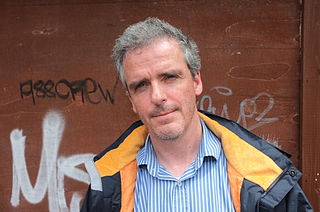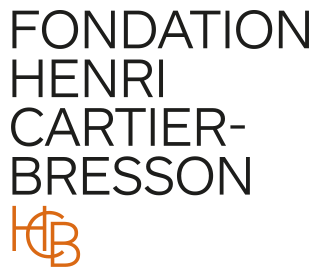Life and career
Fazal Sheikh is an artist who uses photographs to document people living in displaced and marginalized communities around the world. His principle medium is the portrait, although his work also encompasses personal narratives, found photographs, archival material, sound, and his own written texts. He works from the conviction that a portrait is, as far as possible, an act of mutual engagement, and only through a long-term commitment to a place and to a community can a meaningful series of photographs be made. His overall aim is to contribute to a wider understanding of these groups, to respect them as individuals and to counter the ignorance and prejudice that often attaches to them.
Frequently collaborating with local communities around the world, Sheikh has engaged long-term projects in Africa, Afghanistan, India, and in Israel/Palestine. As part of his practice, and in order to create a dialogue surrounding substantive human rights issue, Sheikh offers most of his projects online free of charge.
Fazal Sheikh was born in New York City, 1965, and attended Princeton University, graduating in 1987. Sheikh's work first came to prominence with his work in the Rwandan, Sudanese, Ethiopian, Somali, and Mozambican refugee camps of his father's homeland, Kenya, and throughout eastern and southern Africa. Early exhibitions from his first monograph, A Sense of Common Ground, were held in New York City at the International Center of Photography and Pace/MacGill Gallery. His second long-term project, The Victor Weeps, explored the legacy of war in Afghanistan as Sheikh followed the trajectory of his family heritage back to the lands in northern India where his grandfather was born, and from where he would later migrate to Kenya at a time before the partition of India in 1947, when the region would become Pakistan.
In the following years, exhibitions were held internationally at venues which include Tate Modern, where his work was included in the landmark "Cruel and Tender" survey exhibition of 20th Century photography which traveled to the Museum Lugwig, Cologne, Germany (2003). Sheikh's work has been exhibited in solo exhibitions at the Fotomuseum Winterthur, the Henri Cartier-Bresson Foundation, Paris, which awarded him the Henri Cartier-Bresson Grand Prize in 2005, the Sprengel Museum, Germany, and the Nelson-Atkins Museum of Art. In 2008 Sheikh's work was included in Okwui Enwezor's, Archive Fever: Uses of the Document in Contemporary Art exhibition at the International Center of Photography in New York City.
In 2009 the Mapfre Foundation, Spain, organized a mid-career retrospective and publication that opened in Madrid and traveled to the Huis Marseille, Amsterdam; the Museum of Art, Bogota; and Sala Rekalde, Bilbao.
In 2015, at the end of four years working in Israel and Palestine, Sheikh produced The Erasure Trilogy, a set of books and exhibitions which explores the anguish caused by the loss of memory—by forgetting, amnesia or suppression—and the resulting human desire to preserve memory, all seen through the prism of the Israeli-Palestinian conflict.
Sheikh then worked in collaboration with Eyal Weizman on The Conflict Shoreline, a publication in response to Sheikh's "Desert Bloom’ series which explored the historical, legal, and archival underpinnings of the land claims of the Bedouin community of Al-‘Araqib, the ‘unrecognized’ village at the threshold of the Negev desert which has been demolished more than 70 times in the ongoing "battle over the Negev." The Conflict Shoreline was submitted as evidence for the NGO Zochrot's project on transitional justice, the Truth Commission on the responsibility of Israeli society for the events of 1948–1960. In 2015, Eduardo Cadava, the author and Princeton scholar, who has written extensively on Sheikh's work in the past, published the monograph, Erasures, in response to The Erasure Trilogy.

Ingeborg Hermine Morath was an Austrian photographer. In 1953, she joined the Magnum Photos Agency, founded by top photographers in Paris, and became a full photographer with the agency in 1955. Morath was the third wife of Pulitzer Prize-winning playwright Arthur Miller; their daughter is screenwriter/director Rebecca Miller.
Robert Frank was a Swiss American photographer and documentary filmmaker. His most notable work, the 1958 book titled The Americans, earned Frank comparisons to a modern-day de Tocqueville for his fresh and nuanced outsider's view of American society. Critic Sean O'Hagan, writing in The Guardian in 2014, said The Americans "changed the nature of photography, what it could say and how it could say it. [ ... ] it remains perhaps the most influential photography book of the 20th century." Frank later expanded into film and video and experimented with manipulating photographs and photomontage.

Henri Cartier-Bresson was a French artist and humanist photographer considered a master of candid photography, and an early user of 35mm film. He pioneered the genre of street photography, and viewed photography as capturing a decisive moment.
Robert Adams is an American photographer who has focused on the changing landscape of the American West. His work first came to prominence in the mid-1970s through his book The New West (1974) and his participation in the exhibition New Topographics: Photographs of a Man-Altered Landscape in 1975. He has received two Guggenheim Fellowships, a MacArthur Fellowship, the Deutsche Börse Photography Prize and the Hasselblad Award.

Juergen Teller is a German fine-art and fashion photographer. He was awarded the Citibank Prize for Photography in 2003 and received the Special Presentation International Center of Photography Infinity Award in 2018.
David Goldblatt HonFRPS was a South African photographer noted for his portrayal of South Africa during the period of apartheid. After apartheid had ended he concentrated more on the country's landscapes. What differentiates Goldblatt's body of work from those of other anti-apartheid artists is that he photographed issues that went beyond the violent events of apartheid and reflected the conditions that led up to them. His forms of protest have a subtlety that traditional documentary photographs may lack: "[M]y dispassion was an attitude in which I tried to avoid easy judgments. . . . This resulted in a photography that appeared to be disengaged and apolitical, but which was in fact the opposite." He has numerous publications to his name.

Martine Franck was a British-Belgian documentary and portrait photographer. She was a member of Magnum Photos for over 32 years. Franck was the second wife of Henri Cartier-Bresson and co-founder and president of the Henri Cartier-Bresson Foundation.
Guy Bourdin, was a French artist and fashion photographer known for his highly stylized and provocative images. From 1955, Bourdin worked mostly with Vogue as well as other publications including Harper's Bazaar. He shot ad campaigns for Chanel, Charles Jourdan, Pentax and Bloomingdale's.
Joel Sternfeld is an American fine-art photographer. He is best known for his large-format color pictures of contemporary American life and identity. His work contributed to the establishment of color photography as a respected artistic medium. Furthering the tradition of roadside photography started by Walker Evans in the 1930s, Sternfeld documents people and places with unexpected excitement, despair, tenderness, and hope. Ever since the 1987 publication of his landmark “American Prospects,” Sternfeld’s work has interwoven the conceptual and political, while being steeped in history, landscape theory and his passion for the passage of the seasons. Sternfeld’s is a beautiful and sad portrait of America - ironic, lyrical, unfinished, seeing without judging.

Paul Graham is a British fine-art and documentary photographer. He has published three survey monographs, along with 17 other publications.

Mitchell Epstein is an American photographer. His books include Vietnam: A Book of Changes (1997); Family Business (2003), which won the 2004 Kraszna-Krausz Photography Book Award; Recreation: American Photographs 1973–1988 (2005); Mitch Epstein: Work (2006); American Power (2009); Berlin (2011); New York Arbor (2013); Rocks and Clouds (2018); Sunshine Hotel (2019); In India (2021); and Property Rights (2021).

Dayanita Singh is an Indian photographer whose primary format is the book. She has published fourteen books.
Jim Goldberg is an American artist and photographer, whose work reflects long-term, in-depth collaborations with neglected, ignored, or otherwise outside-the-mainstream populations.

Donovan Wylie is a Northern Irish photographer, based in Belfast. His work chronicles what he calls "the concept of vision as power in the architecture of contemporary conflict" – prison, army watchtowers and outposts, and listening stations – "merging documentary and art photography".
Christopher David Killip was a Manx photographer who worked at Harvard University from 1991 to 2017, as a Professor of Visual and Environmental Studies. Killip is known for his black and white images of people and places especially of Tyneside during the 1980s.

Saul Leiter was an American photographer and painter whose early work in the 1940s and 1950s was an important contribution to what came to be recognized as the New York school of photography.
Humanist Photography, also known as the School of Humanist Photography, manifests the Enlightenment philosophical system in social documentary practice based on a perception of social change. It emerged in the mid-twentieth-century and is associated most strongly with Europe, particularly France, where the upheavals of the two world wars originated, though it was a worldwide movement. It can be distinguished from photojournalism, with which it forms a sub-class of reportage, as it is concerned more broadly with everyday human experience, to witness mannerisms and customs, than with newsworthy events, though practitioners are conscious of conveying particular conditions and social trends, often, but not exclusively, concentrating on the underclasses or those disadvantaged by conflict, economic hardship or prejudice. Humanist photography "affirms the idea of a universal underlying human nature". Jean Claude Gautrand describes humanist photography as:
a lyrical trend, warm, fervent, and responsive to the sufferings of humanity [which] began to assert itself during the 1950s in Europe, particularly in France ... photographers dreamed of a world of mutual succour and compassion, encapsulated ideally in a solicitous vision.
Peter Johnston Galassi is an American writer, curator, and art historian working in the field of photography. His principal fields are photography and nineteenth-century French art.

The Henri Cartier-Bresson Foundation, also known as Fondation HCB, is an art gallery and non-profit organisation in Paris that was established to preserve and show the work of Henri Cartier-Bresson and Martine Franck, and show the work of others. It was set up in 2003 by the photographer and painter Cartier-Bresson, his wife, also a photographer, Franck, and their daughter, Mélanie Cartier-Bresson.

Clément Chéroux is a French photography historian and curator. He is Chief Curator of Photography at the Museum of Modern Art in New York City. He has also held senior curatorial positions at the Centre Pompidou in Paris and at the San Francisco Museum of Modern Art. Chéroux has overseen many exhibitions and books on photographers and photography.










